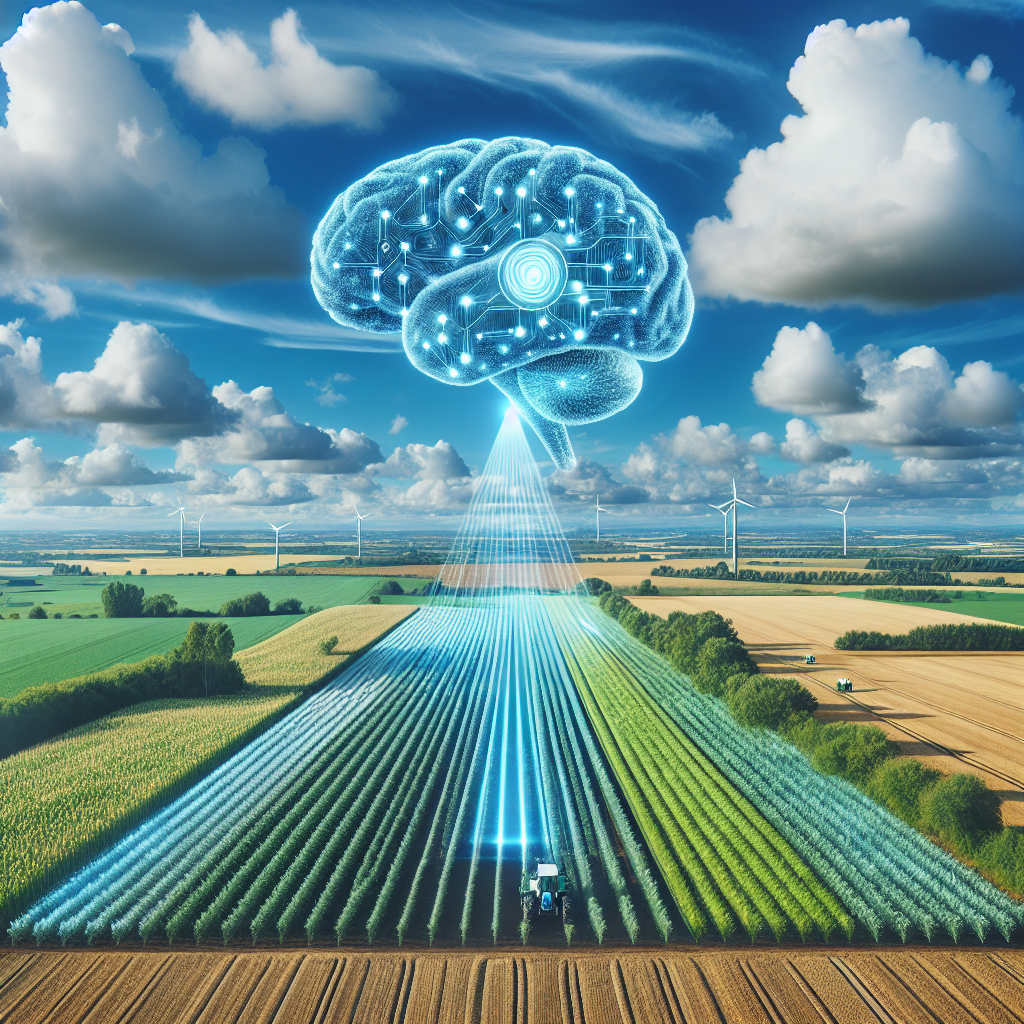Introduction:
Agriculture is a critical sector that impacts the global economy and food security. With the world’s population projected to reach 9.7 billion by 2050, there is an increasing pressure on farmers to produce more food with limited resources. This is where predictive analytics comes into play.
Predictive analytics involves using historical data, statistical algorithms, and machine learning techniques to make predictions about future events. By analyzing patterns and trends in data, predictive analytics can help farmers make informed decisions about crop management, pest control, irrigation, and other aspects of farming.
One of the key technologies driving predictive analytics in agriculture is Artificial Intelligence (AI). AI algorithms can analyze vast amounts of data quickly and accurately, providing valuable insights that can help farmers optimize their operations and increase productivity. In this article, we will explore how AI is being used for predictive analytics in agriculture and its potential benefits.
How AI is Used for Predictive Analytics in Agriculture:
1. Crop Yield Prediction: AI algorithms can analyze data from various sources, such as weather patterns, soil quality, and crop health, to predict crop yields. By using this information, farmers can make informed decisions about planting schedules, irrigation, and fertilization, ultimately increasing crop productivity.
2. Pest and Disease Management: AI can analyze data from sensors, drones, and satellite imagery to detect early signs of pests and diseases in crops. By identifying these issues early on, farmers can take preventive measures to protect their crops and minimize losses.
3. Weather Forecasting: AI algorithms can analyze historical weather data and current weather conditions to provide accurate forecasts for farmers. By knowing when to expect rainfall or drought, farmers can optimize their irrigation schedules and make informed decisions about crop management.
4. Soil Health Monitoring: AI can analyze soil samples and sensor data to assess soil health and fertility. By identifying nutrient deficiencies or soil compaction, farmers can adjust their fertilization and tillage practices to improve crop yields.
5. Market Analysis: AI can analyze market trends, consumer preferences, and pricing data to help farmers make informed decisions about crop selection and marketing strategies. By understanding market demand, farmers can grow crops that are in high demand and maximize their profits.
Benefits of Using AI for Predictive Analytics in Agriculture:
1. Increased Productivity: By using AI for predictive analytics, farmers can optimize their operations and increase crop yields. By making data-driven decisions about planting schedules, irrigation, and pest control, farmers can maximize their productivity and profitability.
2. Cost Savings: AI can help farmers reduce input costs by optimizing their use of resources such as water, fertilizers, and pesticides. By using AI to predict crop yields and manage pests and diseases, farmers can minimize losses and waste, ultimately saving money.
3. Sustainable Agriculture: AI can help farmers adopt sustainable farming practices by optimizing their use of resources and reducing their environmental impact. By using AI for predictive analytics, farmers can minimize water usage, decrease chemical inputs, and reduce greenhouse gas emissions.
4. Improved Decision-Making: AI can provide farmers with valuable insights and recommendations based on data analysis. By using AI for predictive analytics, farmers can make informed decisions about crop management, marketing strategies, and resource allocation, ultimately improving their overall performance.
5. Enhanced Risk Management: AI can help farmers mitigate risks by predicting potential threats such as pests, diseases, and extreme weather events. By using AI for predictive analytics, farmers can take preventive measures to protect their crops and livelihoods.
FAQs:
Q: How accurate are AI predictions in agriculture?
A: AI predictions in agriculture are highly accurate, as AI algorithms can analyze vast amounts of data and identify patterns and trends that humans may overlook. By using AI for predictive analytics, farmers can make informed decisions based on data-driven insights.
Q: What data is needed for AI predictions in agriculture?
A: AI predictions in agriculture require various types of data, such as weather patterns, soil quality, crop health, and market trends. By collecting and analyzing this data, AI algorithms can provide valuable insights that can help farmers optimize their operations and increase productivity.
Q: Is AI only beneficial for large-scale farms?
A: No, AI can benefit farms of all sizes, from small family farms to large commercial operations. By using AI for predictive analytics, farmers can optimize their operations, reduce costs, and increase productivity, regardless of the size of their farm.
Q: How can farmers adopt AI for predictive analytics in agriculture?
A: Farmers can adopt AI for predictive analytics by investing in AI technology, collecting relevant data, and working with AI experts or consultants. By integrating AI into their farming practices, farmers can leverage the power of data-driven insights to improve their operations.
Conclusion:
AI is revolutionizing the agricultural industry by enabling farmers to make informed decisions based on data-driven insights. By using AI for predictive analytics, farmers can optimize their operations, increase productivity, reduce costs, and mitigate risks. As the world’s population continues to grow, the adoption of AI in agriculture will become increasingly important to ensure food security and sustainability. By harnessing the power of AI, farmers can meet the challenges of modern agriculture and thrive in a rapidly changing world.

